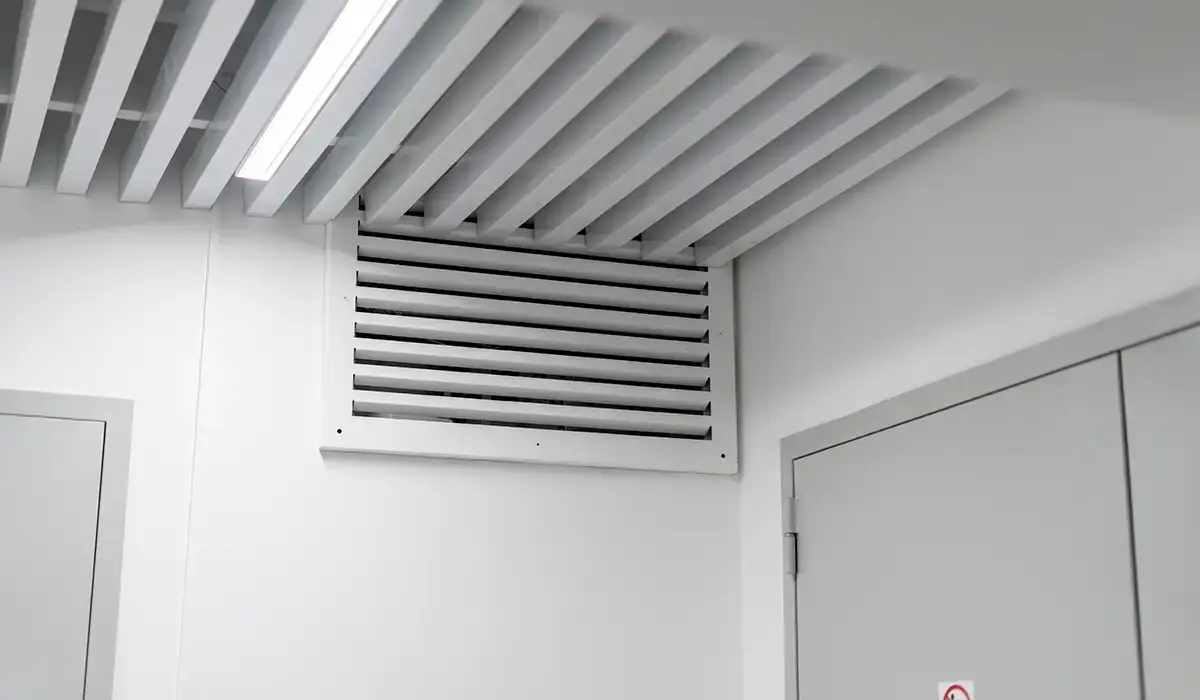Bathroom
Your Complete Guide to Bathroom Ventilation

Bathroom Ventilation Essentials Guide: Keep Moisture Out and Fresh Air Flowing
Bathrooms naturally generate moisture, making effective ventilation crucial for health, comfort, and cleanliness in every household, no matter its size.
Poor air circulation invites mold, mildew, and bad smells—issues we’ll address fully in this Bathroom Ventilation Essentials Guide today.
Whether you’re upgrading or troubleshooting, following proper bathroom ventilation practices can significantly improve air quality and reduce potential long-term damage.
Spot the Warning Signs of Bad Bathroom Ventilation
First, you must identify whether your bathroom suffers from inadequate airflow by observing common moisture-related symptoms and visible structural damage.
Peeling wallpaper, humid air, and soft flooring signal serious issues that suggest your current system doesn’t ventilate properly or efficiently.
Also, keep an eye out for condensation on walls, chipping paint, and ceiling stains after each shower or bath session.
If you’re noticing any of these signs, now is the perfect time to apply our Bathroom Ventilation Essentials Guide thoroughly.
The Do’s of Effective Bathroom Ventilation
For best results, implement each of these strategies to support improved airflow and reduce persistent humidity across your bathroom spaces.
Do: Select the Right Bathroom Fan for Your Space
Every bathroom differs in size and layout, so select a fan with the correct cubic feet per minute (CFM) rating accordingly.
For instance, small bathrooms under 45 square feet require fans with 50 CFM, while large ones need fans rated 150 CFM.
If unsure, always size up rather than down—larger fans handle more air volume and better eliminate humidity and airborne contaminants quickly.
Do: Open Your Bathroom Windows for Extra Airflow
Opening the bathroom window increases airflow dramatically, especially when combined with a working exhaust fan during or after showering activities.
Natural ventilation accelerates moisture removal and brings in fresh air, helping to dry surfaces and discourage mold or mildew growth.
Do: Wipe Away Standing Water After Every Use
After bathing or washing, wipe off wet surfaces like sinks, tubs, or tile floors to reduce lingering moisture in the air.
Standing water prolongs humidity levels and counteracts your exhaust fan’s efforts—so remove it quickly for better drying and circulation results.
Do: Install a Remote Inline Exhaust Fan
If noise disturbs your peace, install an inline fan in your attic to create quieter, more efficient ventilation without sacrificing power.
These fans operate from a distance, moving air effectively without creating loud humming sounds common in traditional wall-mounted fan units.
Do: Run Your Exhaust Fan Long Enough to Vent Properly
Turning the fan on before a shower helps, but continue running it for at least 30 minutes afterward for full ventilation.
Longer run times allow all moist air to escape, keeping humidity levels down and preventing condensation buildup on cool surfaces.
The Don’ts of Poor Bathroom Ventilation Habits
Avoiding these ventilation mistakes is just as important as following proper techniques—small missteps often cause large moisture problems fast.
Don’t: Place the Fan in an Ineffective Location
A poorly located fan can’t remove air effectively—avoid placing it far from showers or in blocked corners of the bathroom.
Position fans near moisture sources and center them when possible, or consider installing multiple fans for large or divided spaces.
Don’t: Keep Shower Doors or Curtains Closed After Use
Shutting the curtain traps steam and delays drying—open them immediately to encourage evaporation and reduce interior condensation risks.
Closed shower areas turn into saunas quickly, amplifying problems like water pooling, mildew growth, and excessive odor retention in tight spots.
Don’t: Use Flexible or Crushable Ductwork
Flexible ducting is vulnerable to damage and can restrict airflow significantly—choose rigid ducting to maintain strong, steady ventilation performance always.
Crushed or kinked ducts block moist air from exiting properly, causing it to linger inside walls or ceilings and damage underlying materials.
Don’t: Forget to Clean Your Fan Regularly
Dust builds up on fan blades fast, especially when combined with moisture—clean them quarterly to keep airflow unobstructed and efficient.
To clean the fan, disconnect power, remove the cover, and gently wipe the blades using a soft cloth or vacuum attachment.
Don’t: Vent Your Exhaust Fan Into the Attic
Routing bathroom vents into the attic traps moisture there, leading to mold growth and ceiling damage throughout your home eventually.
Always direct exhaust fan ducts outdoors—preferably through the roof or wall—to properly expel damp air away from interior spaces permanently.
Why Bathroom Ventilation Truly Matters
Proper ventilation does more than clear fog from mirrors—it protects your walls, flooring, and paint from lasting humidity-related deterioration.
This Bathroom Ventilation Essentials Guide encourages homeowners to address hidden moisture threats now before mold, mildew, or odors spread further.
By following these steps, you maintain better indoor air quality, safeguard your investments, and enhance your bathroom’s long-term durability and value.
Final Thoughts: Start Your Bathroom Ventilation Upgrade Today
Now that you know the do’s and don’ts, take time to inspect your bathroom fan, ductwork, and moisture levels after each shower.
Even small upgrades—like adding a larger fan or opening a window—can dramatically change your bathroom’s environment for the better.
And remember, cleaning your exhaust fan and wiping up standing water keeps your space fresh, healthy, and mold-free every single day.
Explore more smart home improvement tips and lifestyle guides—only here on this website. Stay informed and stay protected today.
